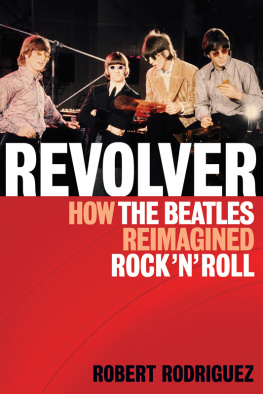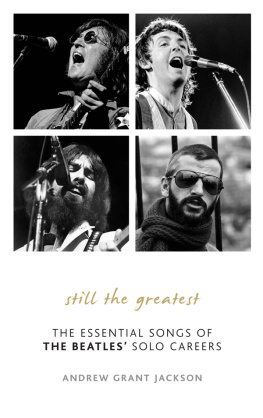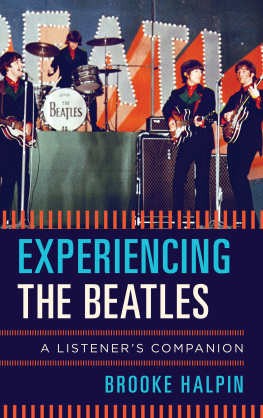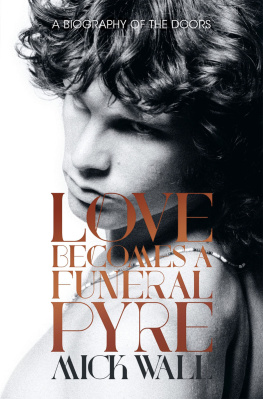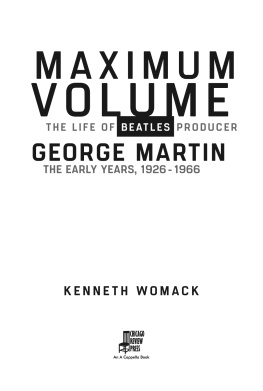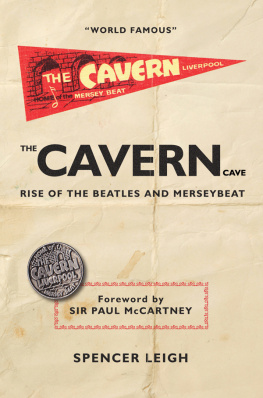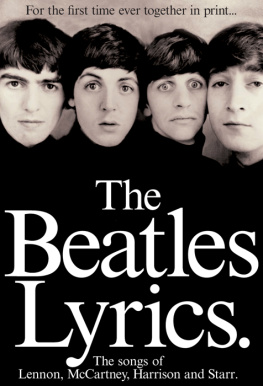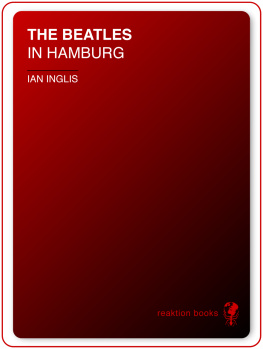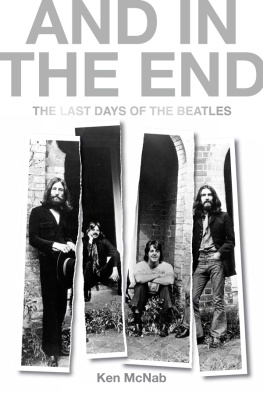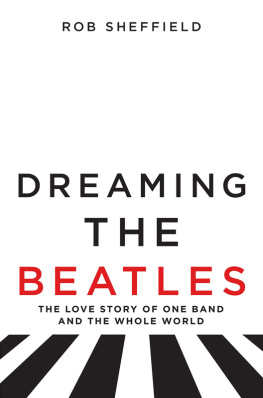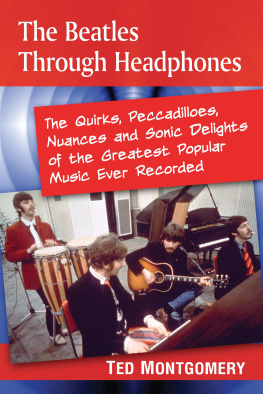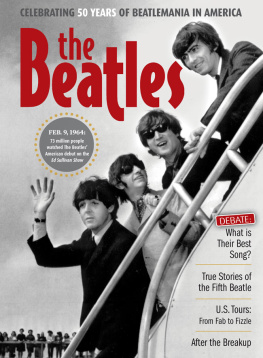LOVE ME DO

LOVE ME DO
50 Great Beatles Moments
Paolo Hewitt


New York London
2012 by Paolo Hewitt
All rights reserved. No part of this book may be reproduced in any form or by any electronic or mechanical means, including information storage and retrieval systems, without permission in writing from the publisher, except by reviewers, who may quote brief passages in a review. Scanning, uploading, and electronic distribution of this book or the facilitation of the same without the permission of the publisher is prohibited.
Please purchase only authorized electronic editions, and do not participate in or encourage electronic piracy of copyrighted materials. Your support of the authors rights is appreciated.
Any member of educational institutions wishing to photocopy part or all of the work for classroom use or anthology should send inquires to Permissions c/o Quercus Publishing Inc., 31 West 57th Street, 6th Floor, New York, NY 10019, or to .
ISBN 978-1-62365-202-9
Distributed in the United States and Canada by Random House Publisher Services
c/o Random House, 1745 Broadway
New York, NY 10019
www.quercus.com
CONTENTS
INTRODUCTION
Fascinating, endlessly fascinating. Other bands you discover, you get into, you hear all their music, check out their biographies, watch the documentaries, and then you move on. Not so with this bunch, this Liverpool band they call The Beatles. Even now, after months of research, writing about them, thinking about them, looking at them and hearing them, I wish to dig deeperthat is the hypnotic effect they exert. How so? Because not only was their music magical, not only was their story almost a fairytale, but their characters, in particular Lennons, remain highly compelling.
John Lennon, like so many major artists, suffered from mood swings, which rendered him an unpredictable entity. One never knew quite where one was when in his orbit, and this character twist kept everyone on their toes, including the other Beatles. Lennon was a pain to be withbut fascinating to get near.
Lennon died at age 40 but he was a man who lived three lifetimes, as did all the Beatles. The band crammed more into their 13 years together than other bands do in a lifetime. And because their constant change and improvement was played out in public, they created one of the great artistic stories of the 20th century. The more success they got the more daring they became. This band went from Love Me Do to Tomorrow Never Knows in just three years, an astonishing artistic leap.
That The Beatles were a band from Liverpool is important. The town they hailed from post-World War II was viewed as a city of crime and vice. Liverpool and its people were not civilized in the eyes of the nation; they were on the bottom rung. The Beatles changed that through their warm personalities, their cheeky humor and their innate sense of style.
Liverpool shaped The Beatlesit toughened them up. Their teenage years were spent in the shadow of Teddy Boy gangs whose viciousness was no laughing matter. People died at their hands. Many early Beatles gigs erupted into frightening mob violence, and this aggression coursed through Lennon. He spent many years with anger bubbling just beneath the surface and treated people with absolute contempt. If the boy had not been able to write songs he would have not have gotten away with the dreadful things he did. And yet Lennon was able to go from a man who thought nothing of hitting a woman to becoming a male feminist. Quite a leap, again.
But Liverpool was not all trouble and violence. The city also gave them Beatnik culture, which instilled in them ideas they would play with their whole careers. One of those was the need for individuality at all times. Take the name. At the time, most bands were named after their singer, for example Cliff Richard And The Shadows. This band had to do things differently. They intuitively recognized the importance of all four members (which is why any member could veto any idea at any time) and so christened themselves The Beatles, one of the first bands to use an all-encompassing moniker.
This name spoke of their bond, the gang-like mentality that they built up and which got them through Beatlemania relatively unscathed, and whichas this book showslasts to this day. The Beatles were a gang of four distinct characters who created their own family. As only one of themGeorgehad been given a childhood in which both his parents played a part, this is not all that surprising.
The Beatles loved and fought in equal measure like brothers and that just added to the charm of the whole thing. John, Paul, George and Ringo were, respectively, the bolshie one, the cute one, the quiet one and the happy one. They moved as one. When asked about the Maharishi once, George, replied, We havent decided yet.
Of great importance to their story is the abolition in the late 1950s of national service. Lennon escaped the army by a few months, although the bands manager Brian Epstein did not. The threat of national service hung over all those born during or just after World War II, so its abolition brought huge relief to an entire generation. It allowed the band to look ahead to the future without anything to drag them back. Unlike their parents, the horrors of World War II exerted no grip on the band. As Ringo once noted, the war to him meant the excitement of bombed-out buildings to play inand the more the merrier.
The impact of this band is hard to imagine today. In 1963 Beatlemania began in Britain and swept the world. It was as if four gods had descended to earth. On their 1964 Australian tour the band looked out of their window and saw nearly 300,000 people waiting to get a glimpse of them. Absolutely phenomenal. And that was just one incident in three of the craziest years they would ever know. That they survived three years of such utter madness is actually a thing to wonder at.
Here then are 50 moments in their career. Taken together these moments are a celebration of The Beatles, still indisputably the worlds greatest rock band. Two of them are dead, the other two are approaching old age, but that doesnt matter. They are The Beatles, and nothings ever going to change their world.
Paolo Hewitt
February 2012

JOHN LENNON meets Paul McCartney
July 6, 1957, Woolton Village Fete, Liverpool
John Lennon sat in the shadow of St. Peters, and the heavens blessed him. Unbeknown to him, in a few hours he would meet Paul McCartney and so put in motion one of the 20th centurys greatest stories. The date was July 6, 1957, evening time, temperature at about 15 degrees Celsius. All day, hundreds of people had been milling around Woolton Village Fete, the men in turned-up pants with shirts, the women in flowery dresses, some of them backless and very daring.
It was in every way a typical village fete. The Liverpool police had put on a display of dog handling; there had been a fancy-dress parade. This years Rose Queen had been named and crowned: step forward, please, Miss Sally White.
John Lennonthe genius, the wit, the bully, the beautiful poet, the angelic soul, the disturbed, capricious John Winstonwas there. He wore a checked shirt and dark pants. His hair was pushed upward in public praise of rocknroll.
Next page

